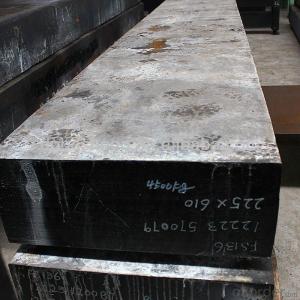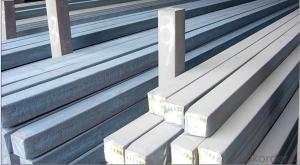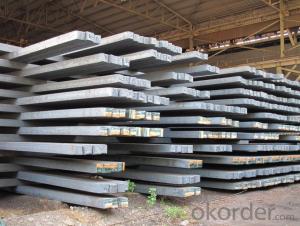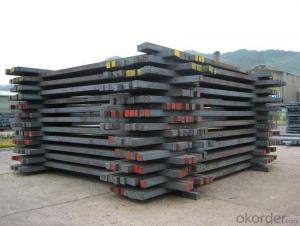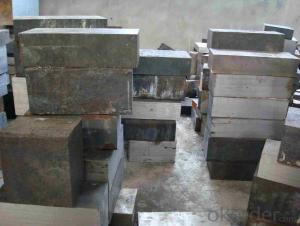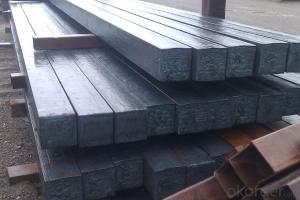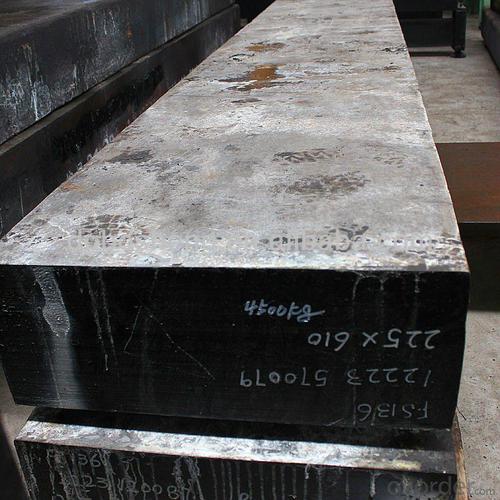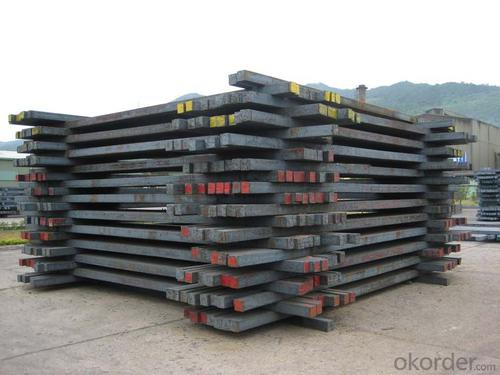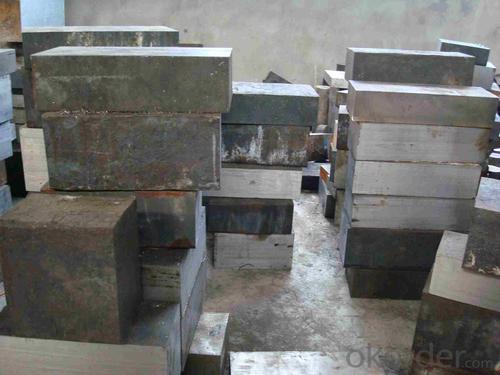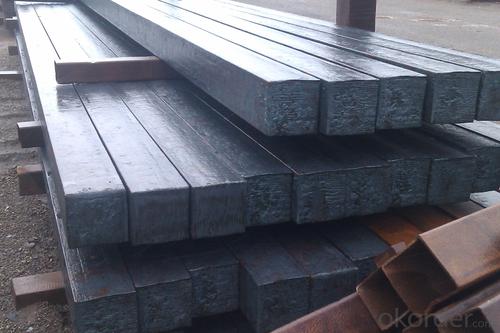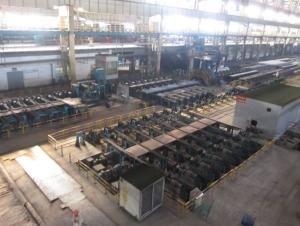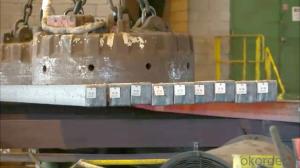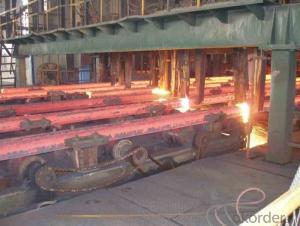Z36 BMP Rolled Steel Coil Construction Roofing Construction
- Loading Port:
- Tianjin
- Payment Terms:
- TT OR LC
- Min Order Qty:
- 100 m.t.
- Supply Capability:
- 10000 m.t./month
OKorder Service Pledge
OKorder Financial Service
You Might Also Like
Structure of Z36 BMP Rolled Steel Coil Construction Roofing Construction
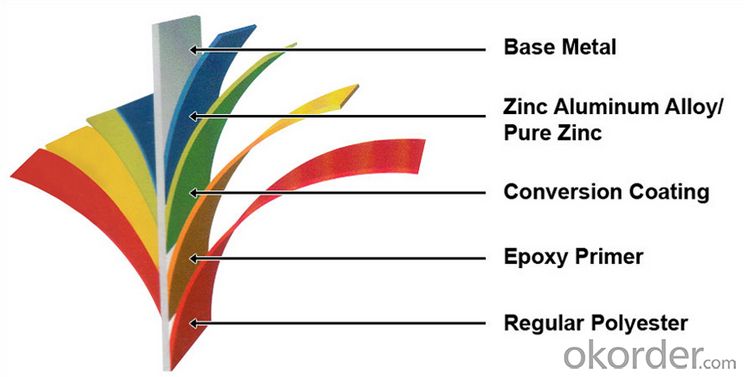
Description of Z36 BMP Rolled Steel Coil Construction Roofing Construction
PPGI is made by cold rolled steel sheet and galvanized steel sheets as baseplate, through the surface pretreatment (degreasing, cleaning, chemical conversion processing), coated by the method of continuous coatings (roller coating method),
and after roasting and cooling. Zinc coating: Z60, Z80, Z100, Z120, Z180, Z275, G30, G60, G90
Alu-zinc coating: AZ60, AZ80, AZ100, AZ120, AZ180, G30, G60, G90
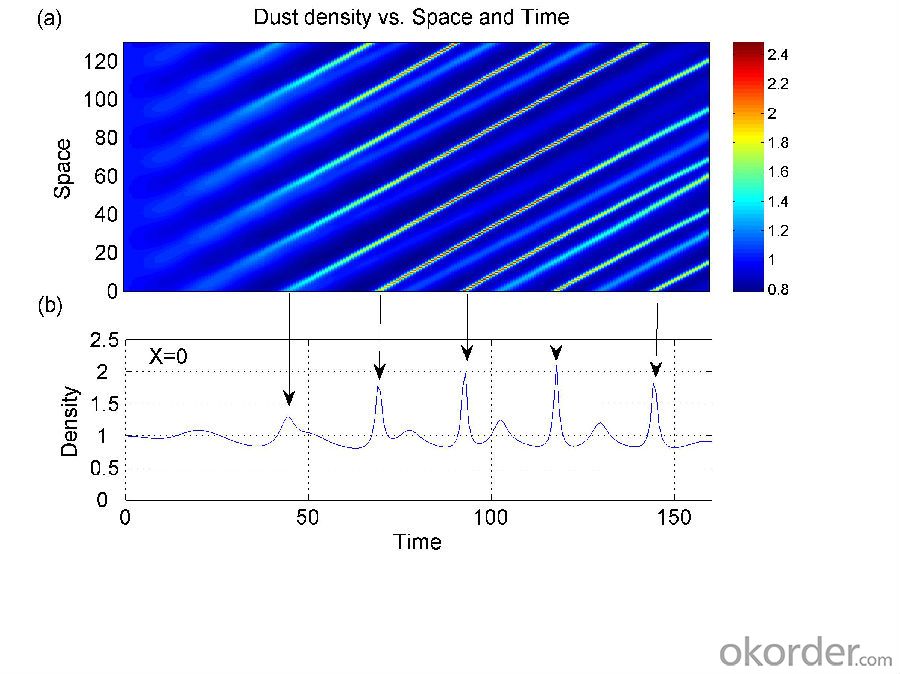
Main Feature of Z36 BMP Rolled Steel Coil Construction Roofing Construction
1) Excellent corrosion resistance: The zinc layer provides a good protection of Pre-painted Galvanizeed Steel Sheet.
2) High heat resistance: The reflective surface of the material aids in efficiently reflecting the sunlight away and in turn reducing the amount of heat transmitted. The thermal reflectivity converts into energy savings.
3) Aesthetics: Pre-Painted Galvanized steel sheet is available in plethora of patterns and multiple sizes as per the requirements that given by our customers.
4) Versatility: can be used in the various areas.Standard seaworthy export packing: 3 layers of packing, inside is kraft paper, water plastic film is in the middle and outside GI steel sheet to be covered by steel strips with lock, with inner coil sleeve.
Applications of Z36 BMP Rolled Steel Coil Construction Roofing Construction
1. Construction and building: roofing; ventilating duct; handrail; partition panel;etc.
2. Electric appliance: refrigerator; washing machine; refrigerator; DVD;etc.
3.Transportation: oil tank; road sign; etc.
4.Agriculture:barn; etc.
5.Others:vending machine; game machine; etc. 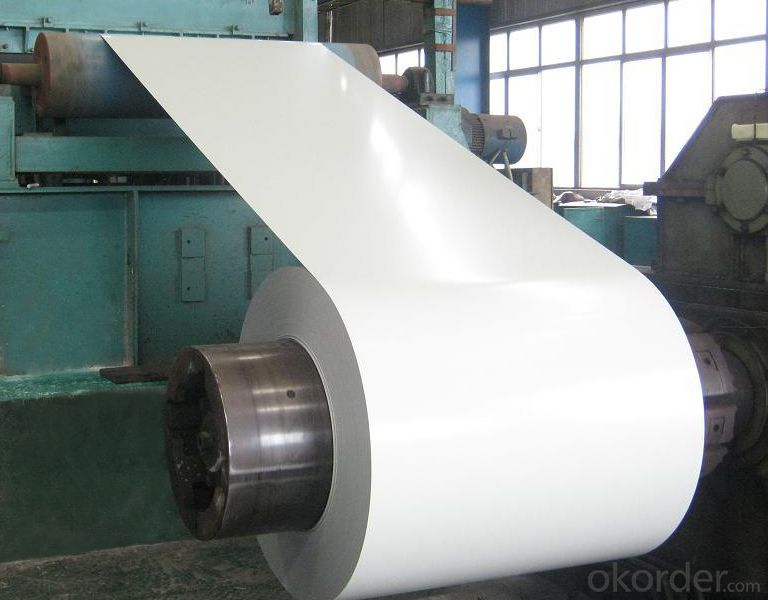
Specifications of Z36 BMP Rolled Steel Coil Construction Roofing Construction
| Classified symbol | Yield Point Minimum N/mm2 | Tensile Strength Minimum | Elongation Minimum % | Application | ||||
| N/mm2 | Nominal Thickness mm (t) | |||||||
| JIS | Yogic | 0.25-0.4 | 0.4-0.6 | 0.6-1.0 | 1.0-1.6 | |||
| G3312 | specification | |||||||
| CGCC | CGCC | -205 | -270 | -20 | -21 | -24 | -24 | Commercial |
| CGCD | CGCD | --- | 270 | --- | 27 | 31 | 32 | Drawing |
| --- | CG340 | 245 | 340 | 20 | 20 | 20 | 20 | Structural |
| CGC400 | CG400 | 295 | 400 | 16 | 17 | 18 | 18 | Structural |
| CGC440 | CG440 | 335 | 440 | 14 | 15 | 16 | 18 | Structural |
| CGC490 | CG490 | 365 | 490 | 12 | 13 | 14 | 16 | Structural |
| CGC570 | CG570 | 560 | 570 | --- | --- | --- | --- | Structural |
| ASTM Designation | Yield Point Minimum | Tensile Strength Minimum | Elongation Minimum % | Application | Q/BQB 445-2004(China standard) | ASM A653/A653M | JISG 3312 | |
| ksi(MPa) | ksi(MPa) | TDC51D+Z | (CS TYPE A+Z) | CGCC | ||||
| A653(M)-99 CS TYPE A,B,C | --- | --- | --- | Commercial | TDC52D+Z | CGCD | ||
| A653(M)-99 FS | --- | --- | --- | Lock Forming | TS250GD+Z | (G250+Z) | - | |
| A653(M)-99 DS | --- | --- | --- | Drawing | TS300GS+Z | (G300+Z) | CGC 400 | |
| A653(M)-99 SS Grade33(230) | 33(230) | 45(310) | 20 | Structural | TS350GD+Z | (G350+Z) | CGC490 | |
| A653(M)-99 SS Grade37(255) | 37(255) | 52(360) | 18 | Structural | TS550GD+Z | (G550+Z) | CGC570 | |
| A653(M)-99 SS Grade40(275) | 40(275) | 55(380) | 16 | Structural | ||||
| A653(M)-99 SS Grade50(345) | 50(345) | 65(450) | 12 | Structural | ||||
| A653(M)-99 SS Grade80(550) | 80(550) | 82(570) | --- | Structural | ||||
FAQ of Z36 BMP Rolled Steel Coil Construction Roofing Construction
We have organized several common questions for our clients,may help you sincerely:
1. How Can I Visit There?
Our company is located in Tianjin City, China, near Beijing. You can fly to Tianjin Airport Directly. All our clients, from home or aboard, are warmly welcome to visit us!
2. How Can I Get Some Sample?
We are honored to offer you sample.
3. Why choose CNBM?
1, ISO, BV, CE, SGS approved.
2, Competitive price and quality.
3, Efficient service team online for 24 hours.
4, Smooth production ability(50000tons/month) .
5, quick delivery and standard exporting package.
6, Flexible payment with T/T, L/C, Paypal, Kunlun bank, etc .
- Q: How are steel billets recycled or reused?
- Various methods can be employed to recycle or reuse steel billets, which are semi-finished metal products. One commonly used method is electric arc furnace (EAF) steelmaking, where the billets are melted down in an electric arc furnace and utilized in the production of new steel products. This process effectively utilizes resources and aids in the reduction of greenhouse gas emissions and energy consumption compared to primary steel production. Steel billets can also be repurposed in industries like construction, automotive, and manufacturing. They can be transformed and reconfigured to create novel steel products or utilized as raw material for forging, rolling, or extrusion processes. By reusing steel billets, the industry can alleviate the demand for newly manufactured steel and conserve natural resources. Moreover, steel billets can be recycled through continuous casting. In this technique, the molten steel is poured into a continuous casting machine, resulting in the formation of solid billets. These billets can then undergo hot or cold rolling processes to produce various steel products such as bars, rods, or wire. Furthermore, steel billets can be melted and recast into different forms via remelting. Technologies like induction melting or vacuum arc remelting can be employed to purify the steel and achieve desired chemical and mechanical properties. Remelting facilitates the production of high-quality steel billets suitable for specialized applications in industries such as aerospace, defense, or medical sectors. In conclusion, steel billets are effectively recycled or reused through processes like electric arc furnace steelmaking, continuous casting, remelting, and reshaping. These methods not only contribute to the sustainability of the steel industry but also aid in resource conservation, emission reduction, and meeting the rising demand for steel products.
- Q: How is the surface condition of steel billets checked?
- The surface condition of steel billets is typically checked through visual inspection and various non-destructive testing methods. Visual inspection involves thoroughly examining the surface of the billets for any visible defects such as cracks, pits, dents, or scratches. This is usually done by trained inspectors who have a keen eye for detecting surface imperfections. In addition to visual inspection, various non-destructive testing techniques are employed to assess the surface condition of steel billets. These techniques include magnetic particle testing, liquid penetrant testing, ultrasonic testing, and eddy current testing. Magnetic particle testing involves applying a magnetic field to the billet's surface and then applying fine iron particles. If there are any surface defects, such as cracks or inclusions, the magnetic particles will be attracted to these areas and form visible indications. Liquid penetrant testing involves applying a liquid dye to the surface of the billet. The dye penetrates any surface defects, and after a certain period of time, excess dye is removed, and a developer is applied. The developer draws out the dye from any surface defects, making them visible and easy to detect. Ultrasonic testing utilizes high-frequency sound waves to detect surface and subsurface defects. A transducer is used to generate sound waves that penetrate the billet's surface. If there are any defects, such as cracks or voids, the sound waves will reflect back, and by analyzing the reflected waves, any surface or subsurface flaws can be identified. Eddy current testing involves passing an alternating current through a coil placed near the billet's surface. Any surface defects or variations in the material's conductivity will cause changes in the current flow, which can be detected and analyzed to determine the surface condition. These non-destructive testing methods provide accurate and reliable information about the surface condition of steel billets, helping to ensure their quality and integrity before further processing or usage.
- Q: What are the main challenges in steel billet production?
- Some of the main challenges in steel billet production include maintaining consistent quality, optimizing production processes to minimize energy consumption and waste, ensuring proper inventory management to meet customer demand, and dealing with fluctuations in raw material prices. Additionally, meeting environmental regulations and addressing safety concerns are also significant challenges in steel billet production.
- Q: What is the role of steel billets in the construction of offshore platforms?
- Steel billets play a crucial role in the construction of offshore platforms. These platforms are massive structures that are installed in the open sea to extract oil or gas from beneath the ocean floor. Due to the harsh environmental conditions and the need for utmost safety and durability, steel billets are widely used in their construction. One of the primary functions of steel billets is to provide the raw material for the fabrication of various components of offshore platforms. Billets are large, semi-finished steel products that are typically used as starting material for the production of other steel products. They are cast into a specific shape, usually a square or a rectangle, and have a solid cross-section. Offshore platforms require steel with exceptional strength, corrosion resistance, and impact toughness to withstand the challenging conditions they face, such as strong waves, harsh weather, and extreme temperatures. Steel billets are often made from high-strength alloyed steels, which offer superior mechanical properties and resistance to corrosion. These billets are then further processed to manufacture different structural elements of offshore platforms, including beams, columns, braces, and other support structures. These components must be able to support the weight of the platform itself, as well as withstand the forces generated by ocean waves, wind, and the extraction process. Moreover, steel billets are also used in the production of pipes and tubes, which are vital for transporting oil and gas from beneath the seabed to the platform or to the shore. These pipes need to be strong, durable, and resistant to corrosion to ensure the safe and efficient flow of hydrocarbons. In summary, steel billets serve as the building blocks for the construction of offshore platforms. They provide the raw material for fabricating various structural components, ensuring the strength, durability, and safety of these massive structures in the challenging offshore environment.
- Q: How do steel billets contribute to the overall strength of a finished product?
- Steel billets contribute to the overall strength of a finished product by providing a solid and dense starting material. Due to their high carbon content and precise manufacturing process, steel billets offer superior mechanical properties, such as hardness and tensile strength. These attributes enable the billets to withstand heavy loads and resist deformation, ensuring that the final product possesses the necessary strength and durability.
- Q: Use medium frequency furnace (1 million 500 thousand volt ampere) to produce 1 ton cast steel blank, how much kilowatt hour is consumed?
- This depends on the intermediate frequency furnace voltage level and inverter efficiency, the general high voltage will save power, generally 550-700 range, details can refer to wcdlsb site medium frequency furnace data
- Q: What are the main factors affecting the ductility of steel billets?
- The ductility of steel billets is affected by several primary factors. First and foremost, the carbon content in the steel plays a pivotal role. Higher levels of carbon generally decrease ductility and make the steel more brittle. This is due to the tendency of carbon atoms to form strong bonds with iron atoms, resulting in a material that is harder and less malleable. The composition of other alloying elements in the steel also has an impact on ductility. Depending on their concentration, elements like manganese, silicon, and phosphorus can have varying effects on the steel's ductility. For instance, manganese can enhance ductility while phosphorus can reduce it. The heat treatment process is another crucial factor that significantly affects the ductility of steel billets. Rapid cooling, known as quenching, can enhance the strength of the steel but may simultaneously decrease its ductility. Conversely, annealing, which involves heating the steel and gradually cooling it, can improve the material's ductility. Furthermore, the presence of impurities and defects in the steel can influence its ductility. Inclusions, such as non-metallic particles, can act as stress concentrators and diminish the material's ability to deform plastically. Similarly, cracks, voids, and other defects can weaken the steel and lower its ductility. Lastly, the grain size of the steel can impact its ductility. Fine-grained steels generally exhibit higher ductility compared to coarse-grained ones. This is because smaller grain boundaries create more obstacles for dislocation movement, thereby increasing resistance to deformation. In conclusion, the ductility of steel billets is influenced by multiple factors, including carbon content, alloying elements, heat treatment, impurities and defects, and grain size. It is crucial to comprehend and control these factors to ensure the desired ductility properties of steel.
- Q: What are the main factors that influence the strength of steel billets?
- The strength of steel billets is impacted by various factors, including the chemical composition, heat treatment, and microstructure of the steel. The chemical composition plays a significant role in determining the strength of steel billets. Alloying elements like carbon, manganese, silicon, and chromium can enhance strength by forming solid solutions or precipitates that increase hardness and tensile strength. It is crucial to control impurity levels and maintain the desired balance of alloying elements to achieve the desired strength properties. Heat treatment is another important factor that affects the strength of steel billets. This process involves heating the steel to a specific temperature and then cooling it at a controlled rate. It significantly impacts the microstructure of the steel, which ultimately influences its strength. For example, quenching and tempering can result in the formation of desired microstructures like martensite or bainite, which enhance strength and toughness. The microstructure of steel billets also plays a crucial role in determining their strength. The arrangement of crystal grains and the presence of different phases within the steel greatly influence its mechanical properties. Fine-grained structures generally exhibit higher strength due to a greater number of grain boundaries, which inhibit dislocation movement and enhance strength. Additionally, the presence of specific microstructural features like precipitates or second-phase particles can contribute to the strength of steel billets. Other factors such as the manufacturing process, cooling rate during solidification, and mechanical working (such as rolling or extrusion) can also affect the strength of steel billets. These factors impact grain size, grain boundary density, and defect concentration, all of which influence the mechanical properties of the steel. In conclusion, the strength of steel billets is influenced by the chemical composition, heat treatment, and microstructure of the steel. These factors can be carefully controlled and optimized to achieve the desired strength properties for various applications.
- Q: What is the purpose of using steel billets in manufacturing?
- The purpose of using steel billets in manufacturing is to provide a raw material that can be further processed and shaped into various steel products, such as bars, rods, pipes, and structural components. Steel billets serve as a starting point for the manufacturing process, allowing for efficient and precise production of finished steel products.
- Q: What is Alfa carbon? What is beta carbon?
- Alfa is directly connected with the functional groups of carbon atoms of carbon atoms, such as CH3CH2COOH CH2 in which methylene propionate is Alfa carbon carbon carbon atom is the beta carbon atom is directly connected with the functional groups and the connection of the carbon (around Kazakhstan), such as the CH3CH2COOH CH3 propionic acid methyl carbon is the beta carbon
Send your message to us
Z36 BMP Rolled Steel Coil Construction Roofing Construction
- Loading Port:
- Tianjin
- Payment Terms:
- TT OR LC
- Min Order Qty:
- 100 m.t.
- Supply Capability:
- 10000 m.t./month
OKorder Service Pledge
OKorder Financial Service
Similar products
Hot products
Hot Searches
Related keywords
